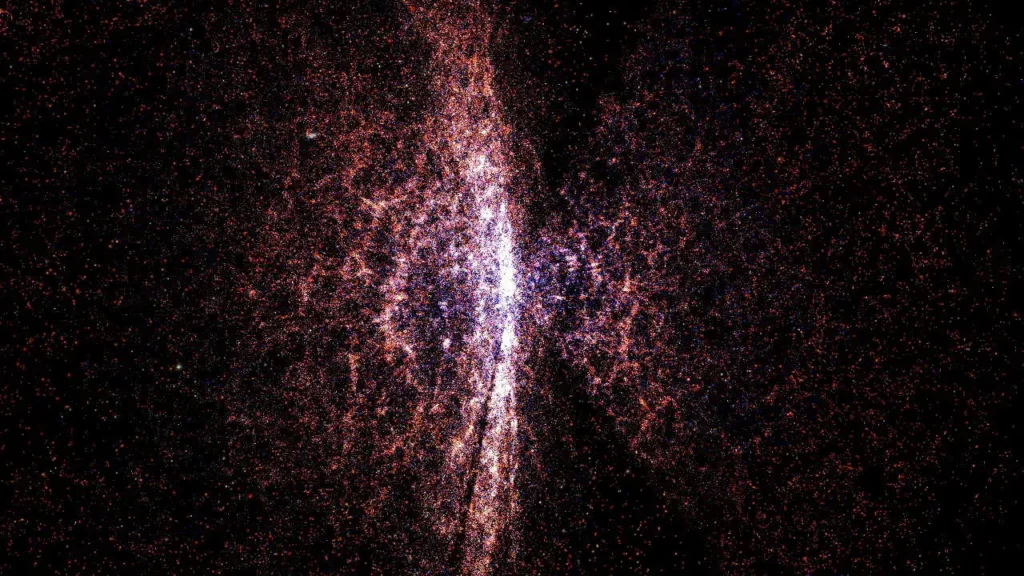When we look out into the universe, it looks like it is filled with galaxies arranged in a web-like pattern. This means that there are lots of clumps of material around some areas but not so many clumps in other parts – just like blueberries might be concentrated in some bits of a muffin and completely absent from others.
Scientists recently did some experiments in which they thought of galaxies as a bunch of dots, rather than like one thing. This allowed them to use math from science about materials (like metals) to measure how “messy” our universe is, giving us better insights about what it is made of.
Oliver Philcox, one of the people on a research team, said that galaxies in space are different from materials here on Earth. They have their own characteristics that make them special.

Salvatore Torquato, a professor at Princeton University, working with Oliver Philcox, who was a visiting Ph.D. student at the Institute from 2020 to 2022 and is now a Junior Fellow at Columbia University, recently published their work in Physical Review X.
This picture shows the biggest things there are in the universe. It was created from data from two different places. One was called the Sloan Digital Sky Survey and the other is WMAP. Both were put together by NASA and the University of Chicago along with a museum which is called Adler Planetarium and Astronomy Museum.
Two researchers looked at some data from two different educational institutes – Princeton University and the Flatiron Institute. This data was made up of one thousand simulations that were created using billions of tiny particles called dark matter. These particles stuck together in groups, which act like galaxies in space.
The research team found that the galaxies in the universe are grouped together in certain ways. They call this the “pair-connectedness function”. With the help of this and other pieces of data, the scientists noticed that if you look from a distance at hundreds of millions of miles, then things appear more organized (this is called hyperuniformity). Looking up close however, things seem very rushed and scattered (which they call antihyperuniformity).
Torquato said that whether something looks ordered or chaotic depends on how far away you are from it. To illustrate his point, he referenced Georges Seurat’s painting A Sunday on La Grande Jatte. At a distance, it looks quite orderly but when you look up close, it looks more random and messy. The same thing can be said for the universe – sometimes things seem to be organized and other times they may appear unstructured – like with a Rorschach inkblot test where everyone has a different idea about what they’re seeing.
The researchers used different mathematical tools such as near neighbor clustering, Poisson distribution and pair connectedness to measure how ordered things are. They found out that what works for understanding the universe also applies to other physical systems.
Scientists have combined two fields, cosmology and condensed matter physics, to explore the universe. This includes learning about galaxies, cosmic voids (massive empty spaces) and ionized hydrogen bubbles that were created in the early stages of the universe. They hope this understanding can also be used to learn more about material systems on Earth. The scientists still need to do more work before their techniques are ready to use with real data but they agree these methods show a lot of promise!
Reference: “Disordered Heterogeneous Universe: Galaxy Distribution and Clustering across Length Scales” by Oliver H. E. Philcox and Salvatore Torquato, 14 March 2023, Physical Review X.
DOI: 10.1103/PhysRevX.13.011038


